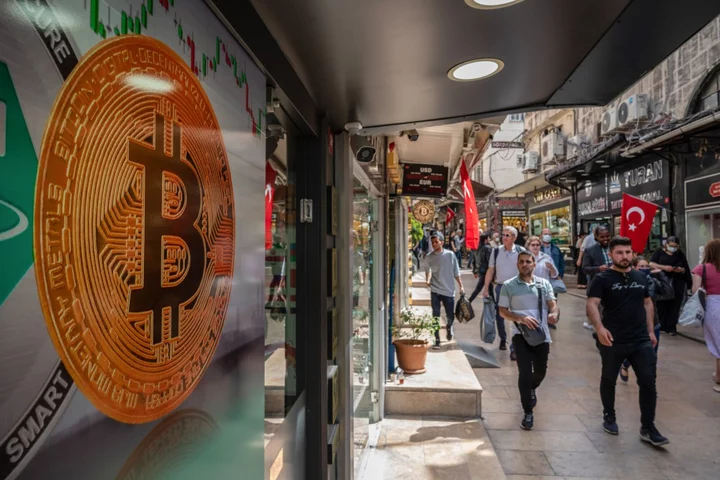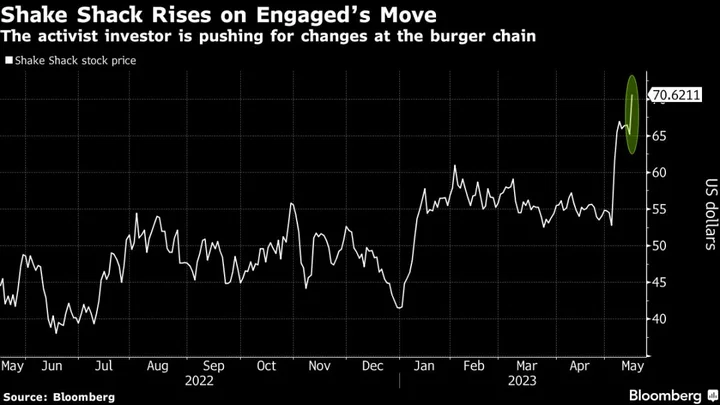Family homelessness in the US is on the rise in an alarming sign of how the increasing cost of goods, the ever-tightening housing supply and the end of most pandemic-era benefits are putting pressure on Americans.
Some 72,700 people in families with children were experiencing homelessness in 20 of the largest cities in the nation as of January, a 37.6% jump from a year before, according to an analysis of data provided by jurisdictions. In New York, that figure shot up by two thirds, while Chicago, the District of Columbia and Fort Worth, Texas, also saw outsize increases.
The findings — based on data collected from cities that conducted a count of people staying in shelters or on the streets — show a worsening national picture ahead of a government report due at the end of year. The Housing & Urban Development Department typically releases a full count that includes point-in-time data from more than 400 jurisdictions in December.
The situation is likely even more grim than the numbers show: so-called point-in-time samples often are a significant undercount, and cities including San Francisco and Seattle — which have dire homeless crises — were excluded from the analysis because they only counted the number of people in their shelters this year.
The latest estimates illustrate the worrisome direction family homelessness is headed — all as eviction bans, stimulus payments and enhanced food and child-care programs expire. Families of color also tend to be disproportionately affected, with Black Americans making up half of those experiencing family homelessness, according to HUD.
Richard Cho, a senior adviser at HUD, said that early reports indicate that the number of families with children experiencing homelessness “has been increasing dramatically.” The department is anticipating “some probably really difficult and challenging data” going forward.
“There were many, many, many people that were already just barely making it,” said Kathy Johnson, executive director of Oak City Cares, a nonprofit focused on helping people experiencing homelessness in North Carolina. “And then when inflation hit and the economy changed, those people who were just on the edge teetered over.”
HUD estimates some 161,000 Americans in families with children experienced homelessness in 2022. Though the pandemic readings marked the lowest in data going back to 2007, some experts caution that jurisdictions were unable to conduct accurate counts during the health-care crisis. The Department of Education uses a broader definition and also counts those living out of motels or with relatives due to a lack of housing. It said some 1.1 million children were homeless during the pandemic.
To be sure, in many places family homelessness is still below pre-pandemic levels, and cities like New York, Boston and Chicago said the arrival of asylum seekers since last year is weighing on the numbers they reported. In New York City, which updates its figures daily, there were about 53,500 people in families with children staying in its shelters as of July 9 — roughly 10,000 more than when the city conducted its point-in-time count in January.
These numbers come as the cost of nearly everything continues to climb. Housing prices were up 7.8% nationwide in June from a year ago. Pre-pandemic, research from the Government Accountability Office estimated that a $100 increase in median rent was associated with a 9% jump in homelessness.
An increase in the number of homeless families could weigh on the development and well-being of American families in years to come. Research from the Centers for Disease Control and Prevention found that homeless children are at higher risk of facing serious health conditions and are more susceptible to substance abuse and violence. Every person experiencing chronic homelessness costs taxpayers almost $36,000 annually, and for every new American who becomes homeless, that means more resources need to be spent.
“Homelessness is not a static event,” said Ellen Bassuk, founder of the National Center on Family Homelessness. “You don’t become homeless, and then you’re not homeless two months later and it’s over. It goes on and on.”
In an effort to avoid some of those vicious cycles, the Biden administration unveiled a plan last year aimed at reducing overall homelessness in the US by one-fourth by 2025 by expanding access to housing vouchers and simplifying the application process for government assistance programs, among other initiatives. The president's budget for fiscal year 2024 proposes $10.3 billion for homelessness assistance programs.
The District of Columbia saw a 30% increase in family homelessness this year, according to numbers provided by the city. A vast majority of those people were women, and more of than half of them had experienced domestic violence at some point. What’s more, three in four of those people said they had an income despite being homeless.
Among those homeless in the nation’s capital is Mercedez Milling, a 28-year-old single mother of four. She delivered packages and worked at a pizza shop during the pandemic, but experienced homelessness during that time and bounced between living in her car and staying with family.
She and her children have been living in a Salvation Army transitional housing program with some 25 other families for most of this year — and Milling is taking personal finance and workforce development classes. But one big obstacle is stopping her from getting a job: She gave birth to her youngest at her mother’s home during the pandemic and never received an official birth certificate. Without it, she’s unable to sign her daughter up for child care.
“There’s too many things to think about,” she said. “Making sure we have a place to sleep is just one of them.”
Still, Milling remains optimistic. She wants to return to school almost a decade after dropping out of college, and hopes to become a doula.
“Once you become comfortable with a house, you don’t want to see the streets,” she said.
Milling is fortunate to live in a city where she’s been able to find shelter.
While policies like right-to-shelter — which guarantee families a place to sleep at night — exist in cities like New York, Boston and DC, many households in other parts of the country are left to navigate homelessness on their own.
Roughly half of all homeless families with children in places like Tennessee and Idaho were unsheltered as of last year, according to HUD. In Oregon, that number was even higher. In Raleigh, North Carolina, where that number is closer to 72% — the highest among big cities in the US — local authorities are running against the clock to expand their services.
Lorena McDowell, who directs the department of housing affordability in Wake County, where Raleigh is located, has taken on the challenge after living at shelters and group homes herself while growing up in Minnesota.
“I am not the norm. The norm is you end up just trying to figure out how to survive and feed yourself,” she said. “The American dream, the idea of owning a home or going to college, is almost just like you don’t even see it because you’re just trying to survive.”
McDowell is waiting on a study on shelter needs that will help her team set priorities to tackle the issue. Still, she says the solution can’t lie solely on finding people a place to sleep — it’s finding people a place to live.
“Once you fall into homelessness, it is incredibly difficult to dig back out of it,” said McDowell. “Your kids lost all their toys, all their clothes, all their comforts, all your furniture, all the things you need to build a home.”
--With assistance from Andre Tartar and Caelyn Pender.
(Corrects last name of Mercedez Milling throughout.)









